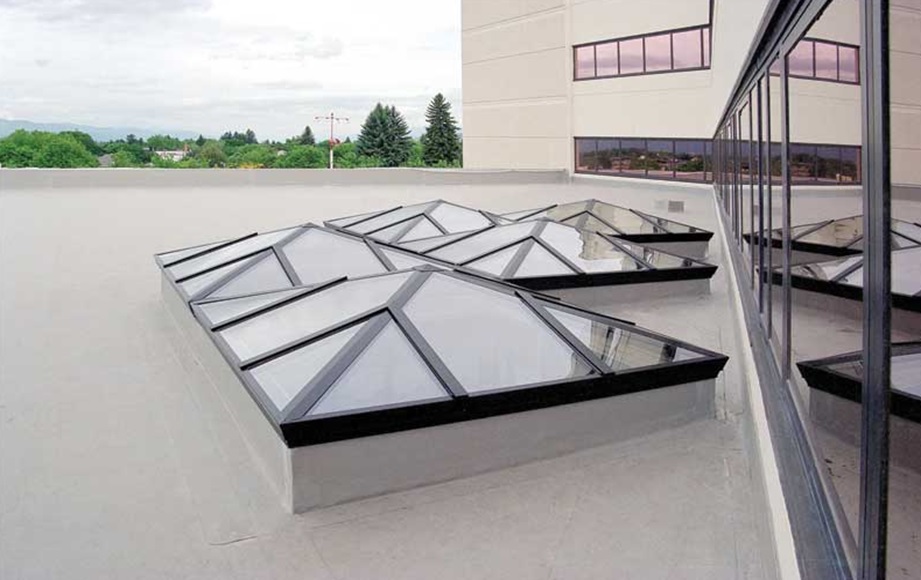Sloped glazing is a remarkable architectural element that combines both aesthetics and functionality, offering a unique blend of design and practicality. In this article, we will delve into the captivating world of sloped glazing, exploring its diverse applications, benefits, and the seamless integration of beauty and functionality it brings to architectural designs.
The Elegance of Inclined Glass
It often referred to as inclined glass or pitched glazing, is a captivating architectural feature that adds a touch of elegance to any structure. Its inclined design creates a visually stunning effect, making it an appealing choice for modern and contemporary buildings. The sleek lines and gentle angles of the windowpane impart a sense of dynamism and sophistication to architectural facades, enhancing the overall aesthetic appeal.
Harnessing Natural Light
One of the significant advantages of sloped gloss is its ability to maximize the ingress of natural light into interior spaces. With its angled orientation, it captures sunlight throughout the day, filling rooms with abundant daylight. This not only creates a bright and inviting atmosphere but also reduces the need for artificial lighting, promoting energy efficiency and sustainability.
Seamless Integration with Surroundings
It effortlessly blends with the surrounding environment, whether it is a picturesque landscape or an urban skyline. Its inclined surface reflects the changing colours of the sky, creating a harmonious connection between the built environment and nature. Whether used in residential homes or commercial structures, sloped varnish enables occupants to enjoy panoramic views while maintaining a strong connection with the outdoors.
Versatile Applications
It finds a wide range of applications in architectural design. It can be utilized in atriums, skylights, canopies, and conservatories, adding a touch of sophistication and openness to these spaces. It can also be integrated into the design of modern extensions or rooftop structures, creating unique and contemporary living areas. Its versatility allows architects to explore innovative possibilities in terms of form, function, and aesthetics.
Enhancing Energy Efficiency
It contributes to the energy efficiency of buildings by utilizing advanced glass technologies. Low-emissivity (Low-E) coatings and thermal insulation help reduce heat transfer, minimizing energy loss during hot summers or cold winters. The strategic placement of a sloped windowpane can also facilitate passive solar heating and cooling, optimizing indoor thermal comfort. This integration of energy-efficient features not only reduces environmental impact but also enhances the overall performance of buildings.
Structural Considerations
Designing and implementing a sloped windowpane requires careful structural planning and engineering. The selection of appropriate materials, such as reinforced glass or laminated glass, ensures durability, safety, and resistance to external forces. Advanced engineering techniques are employed to achieve the desired slope angles while maintaining structural integrity. Collaboration between architects, engineers, and contractors is crucial to ensure successful implementation and adherence to building codes and regulations.
Aesthetic Appeal of Angled Glass
Sloped glazing, often used in skylights, conservatories, and atriums, adds a distinctive flair to architectural designs. The unique angling of the glass creates fascinating interplays of light and shadow within the interior spaces, providing a dynamic visual experience that changes with the sun’s position.
This design element enhances buildings’ exteriors, too. The reflective nature of glass mirrors the surrounding environment, allowing the structure to blend seamlessly into its locale.
Functionality Beyond Beauty
The value of windowpane goes beyond aesthetics. It’s also a powerful tool for creating energy-efficient buildings. By maximizing the inflow of daylight, it reduces the need for artificial lighting, leading to significant energy savings.
Moreover, when combined with low-emissivity (Low-E) coatings or tinted laminated glass, it can help control solar heat gain, contributing to thermal comfort and further energy efficiency.
Conclusion
Sloped glazing stands as a testament to the seamless integration of aesthetics and functionality in architectural design. Its captivating presence, ability to harness natural light, versatile applications, and contribution to energy efficiency make it an appealing choice for modern structures. As architects continue to push boundaries and explore new possibilities, it will undoubtedly remain a timeless architectural element, enhancing the beauty and functionality of buildings for years to come.

